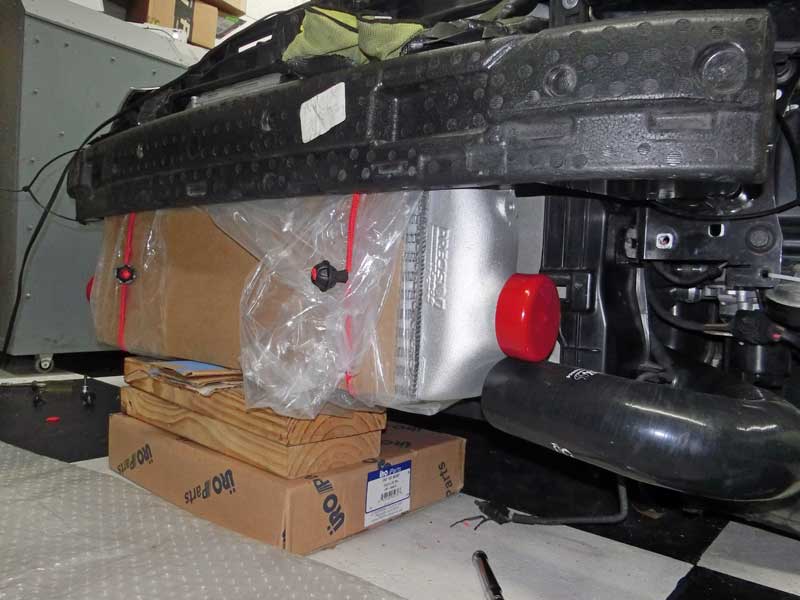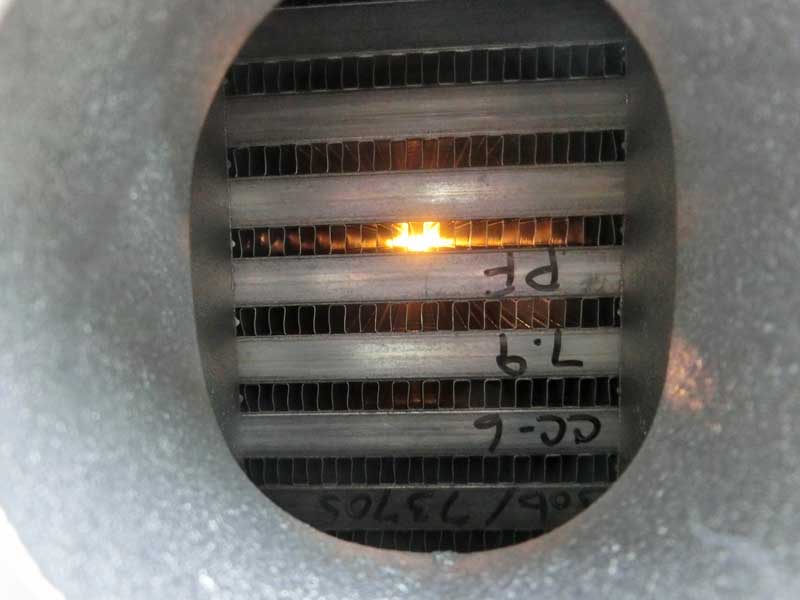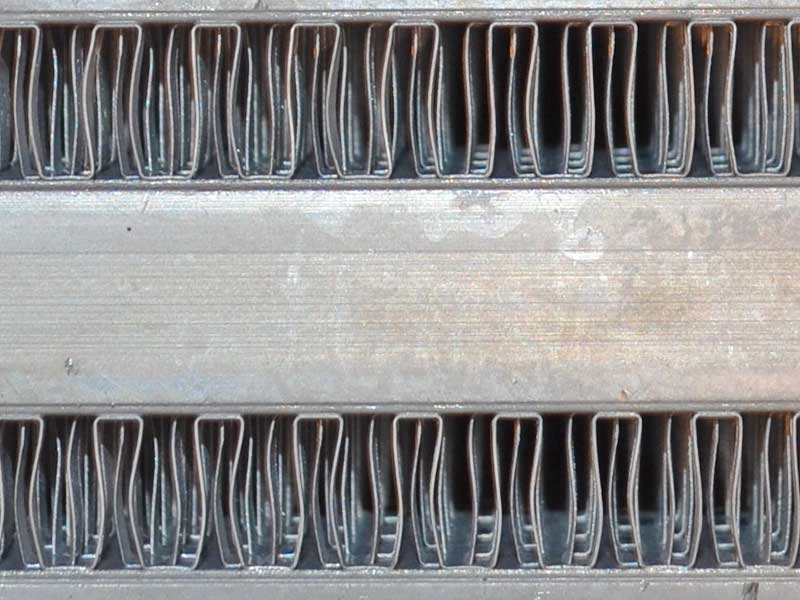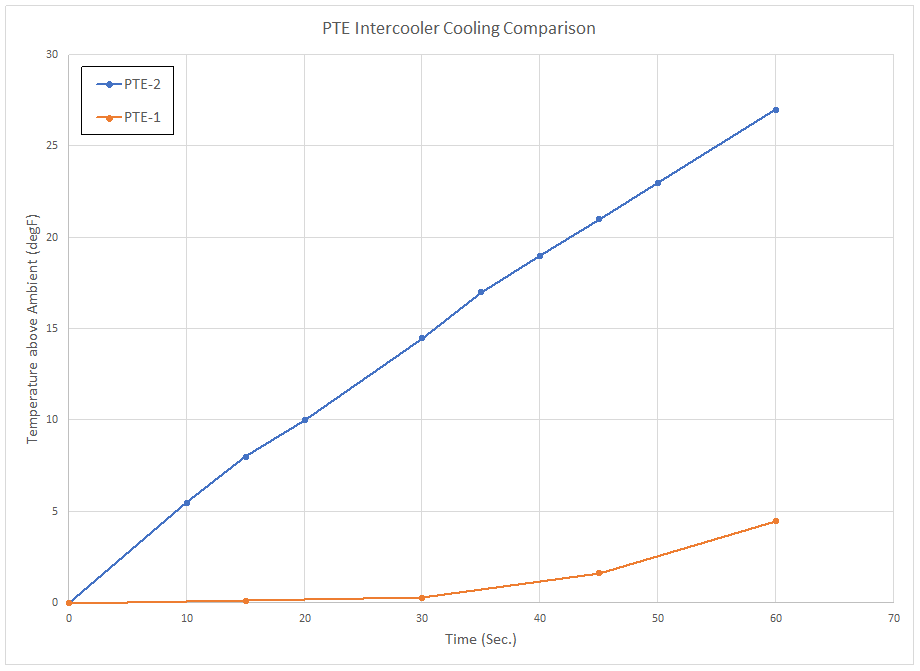Background:
Previously when looking for a suitable intercooler to serve as the front portion of a bicooler arrangement I had obtained a Precision Turbo and Engine (PTE) intercooler.
At that time I had decided to skip trying the PTE intecooler on my car with the intent of finding a front mountable option that may cool a little better.
After collecting some more data I began to think that optimal performance from a bicooler configuration may have dependency on parity of airflow between the stock location and front mounted intercoolers. If the stock location intercooler has substantially higher airflow than the front mounted intercooler it seems reasonable that more air will flow through the stock location, reducing the cooling contribution of the front mounted IC.
To maximize cooling it would then be preferable to have near equality in airflow, assuming each core cools adequately. Because I intend to use the do88 intercooler for the time being, and it has a very high airflow, the front mounted intercooler would also need to allow high airflow. This brought me back to the PTE intercooler.
To my knowledge there is no kit available that uses this intecooler, so I would need to create mounting brackets. I acquired a PTE intercooler with the intent to install it and collect operating data.
The Test:
The PTE intercooler uses a 2.75″ inlet/outlet diameter end tank. Previously I had used the do88 intercooler hoses to flow test the PTE IC but now I had obtained straight silicone reducers so I could use the PTE IC with the bicooler hoses from my Majesty bicooler.

The PTE IC was attached to the flow bench to see how it would flow with the straight couplers and it produced a reading of 325 CFM @ 28″ of H2O. This led me to think, “what did I forget to attach”, because the reading was so far in excess of any intercooler I have measured thus far. Everything looked correct and a second run through produced the same results.
I then switched to the do88 intercooler hoses, skeptical that they would alter the airflow enough to be on par with the previous test.
Using the curved silicone hoses resulted in an airflow drop to 303 CFM. This was still far more than the previous test with the PTE intercooler and was substantially more than the full size do88 intercooler flows. These results are compared in the chart; PTE-1 is the previous product, PTE-2 is the current product:
The PTE IC was removed from the flow bench and I peered into the end tank to see if I could find any indication for the change in airflow. What I noticed right away was that moving the IC around would change the color between the internal fins from white to black, matching the checkerboard pattern of the garage floor. Putting a light at one end and looking at the other confirmed that the internal fin density is relatively low.
Going back to pictures I took of the previous sample it is apparent the design of the core is different between the two products, although they are both PTE intercoolers of the same model number.
Curious to see how the cooling performance has been effected by the change in core design the PTE IC was setup for a bench cooling test.
The current methodology for this test is slightly different from when I tested the first product, but the first 60 seconds of the test is the same procedure, and that timeframe is used for this comparison.
The intercooler has heated air drawn through it for 60 seconds without the aid of forced cooling passing through the exterior cooling fins. The air temperature exiting the intercooler is recorded periodically at the outlet.
Compared with the previous test this version of the intercooler produced much different results.
The temperature out the product now (PTE-2) begins to increase almost immediately. In fact I hardly have time to turn on the heat gun and hair dryer and turn back to the bench to note the outlet temperature has begun to rise. In comparison, the prior sample of the product (PTE-1) showed just over a 1.5 degF rise in outlet temperature after 45 seconds of heating.
As the chart shows, after 60 seconds the previous version (PTE-1) output air temperature was 4.5 degF over ambient and the current product (PTE-2) output air temperature is 27 degF over ambient.
Conclusions:
The change in core properties highlights a challenging tradeoff of intercooler design. It is possible to have too much airflow if the cooling performance is not maintained.
The Precision Turbo and Engine intercooler product I recently obtained is a different design from the previous product and shows a substantial increase in airflow performance. The tradeoff is cooling efficiency, which has plummeted, making the product useless for the intended purpose.
The PTE intercooler will be returned and I will continue looking for an adequate front mountable intercooler to pair with the do88 stock location IC.







